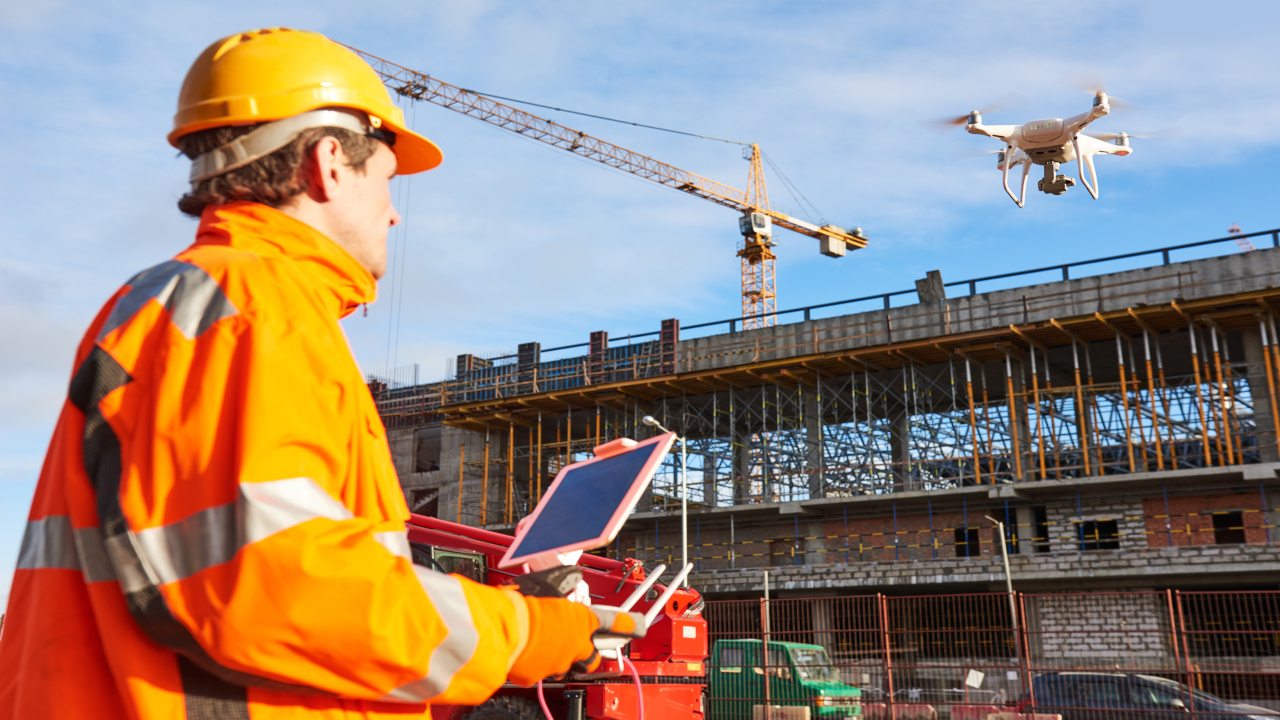COVID-19 is still very much impacting the construction industry. However, along with some challenges, it brought along a few influential trends that have been shaping this industry this year.
Reinforced Safety Measures
 When it comes to the construction industry, safety is the primary concern, given that nearly half of all the fatal work injuries take place on construction sites. As per the Bureau of Labor Statistics, around 150,000 construction site accident injuries have been reported per year. And, in 2020 alone, a total of 1,008 construction workers died on the job in the U.S. That’s really shocking given the perturbing fact that construction workers make up only 6% of the U.S. labor force. But, this year some expect a fall in construction fatalities because of a new trend that has drastically increased safety behavior and attitudes among construction workers.
When it comes to the construction industry, safety is the primary concern, given that nearly half of all the fatal work injuries take place on construction sites. As per the Bureau of Labor Statistics, around 150,000 construction site accident injuries have been reported per year. And, in 2020 alone, a total of 1,008 construction workers died on the job in the U.S. That’s really shocking given the perturbing fact that construction workers make up only 6% of the U.S. labor force. But, this year some expect a fall in construction fatalities because of a new trend that has drastically increased safety behavior and attitudes among construction workers.
That’s right, I’m talking about the coronavirus pandemic!
All industries have been facing COVID pressures that have been triggering one of the worst job crises and affecting workplace settings by emphasizing on strict safety protocols and good hygiene practices. Prioritizing safety and health? Doesn’t that sound good for the construction industry?
As the construction industry turned to heightened safety, wearable construction technology became the latest buzzword. It’s a new but promising technology that can ensure safety and eliminate work threats while maintaining productivity and workplace satisfaction. This technology, for example, has given rise to smart wearables – devices that construction workers wear on them and which allow them to transmit and receive information about a worker’s location, biometric signs and other job-site info. A report by the U.S. Chamber of Commerce stated that more than 20 % of construction contractors are expected to use such technology by 2022. Material Unit Lift Enhancers (MULE) and tasked robots were also specifically designed to lift and handle heavy or hazardous materials or to carry out tasks like laying bricks or constructing scaffolding while maintaining the safety of construction workers.
Rise in Material Costs
 This is an era where all the blame goes on COVID-19. Back then, when COVID-19 was in full bloom, the ongoing lockdowns of different countries’ trading hubs had experts warning everyone of upcoming shortages – for example, shipping container shortages for the construction industry. At that time, bored homeowners started turning to DIY home projects. Thus, the answer to “why construction materials are suddenly rising?” lies in the demand and supply connection. When the demand for building materials exceeds its supply –too much money chasing too few goods – it will drive up the prices of these materials.
This is an era where all the blame goes on COVID-19. Back then, when COVID-19 was in full bloom, the ongoing lockdowns of different countries’ trading hubs had experts warning everyone of upcoming shortages – for example, shipping container shortages for the construction industry. At that time, bored homeowners started turning to DIY home projects. Thus, the answer to “why construction materials are suddenly rising?” lies in the demand and supply connection. When the demand for building materials exceeds its supply –too much money chasing too few goods – it will drive up the prices of these materials.
According to the latest statistics provided by the U.S. Bureau of Labor, the Producer Price Index for construction materials has increased by 8 % since the start of 2022. But, the real bad news is that the prices are expected to increase more in mid-September.
As a result, innovative materials and technology like AR, drones and BIM are continuously being used to combat this cost pressure.
Improve Fire Protection
 Honestly, I can’t think of anything worse than people losing their lives in avoidable tragedies- a tragedy like the Grenfell Tower fire in June 2017.
Honestly, I can’t think of anything worse than people losing their lives in avoidable tragedies- a tragedy like the Grenfell Tower fire in June 2017.
Just before 01:00 on 14 June, a fire broke out in one flat of the building, apparently due to an exploding fridge. However, once it got into the external cladding, the fire spread up the outside of the building. Additionally, since the weather was quite windy, the wind created a draw that caused the space between the panels and the building to function as a chimney, sucking the fire upwards. The tragedy took the lives of 71 people; 71 innocent lives were lost due to failed fire safety regulations.
Consequently, the construction industry has been focusing on upgrading building regulations and fire safety measures.
Pingback: What Are The Different Types Of Industrial Paints? | Building construction blog
Pingback: Everything You Need To Know About The Earthworker: Training, Missions, Skills And Remuneration | Building construction blog
Pingback: Which Frame Supports The Roof? | Building construction blog